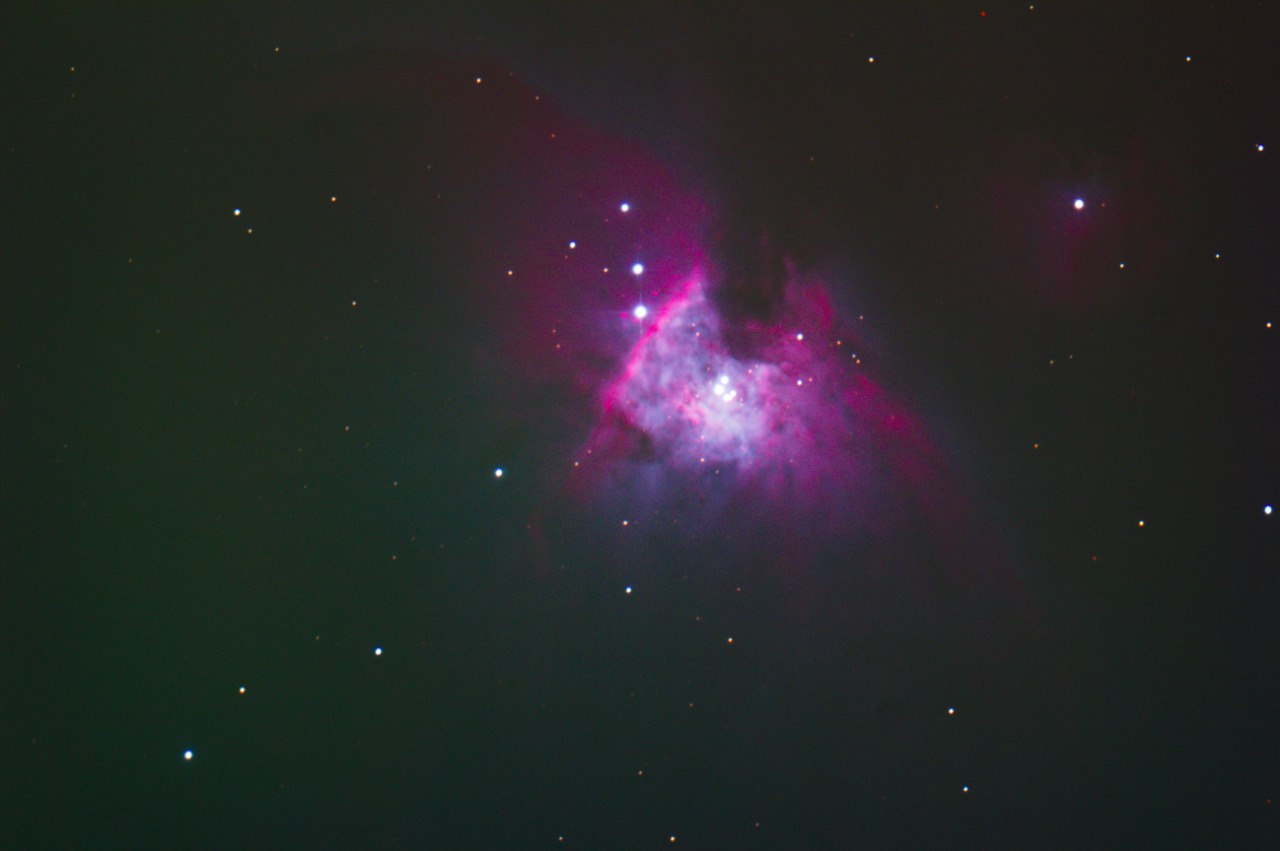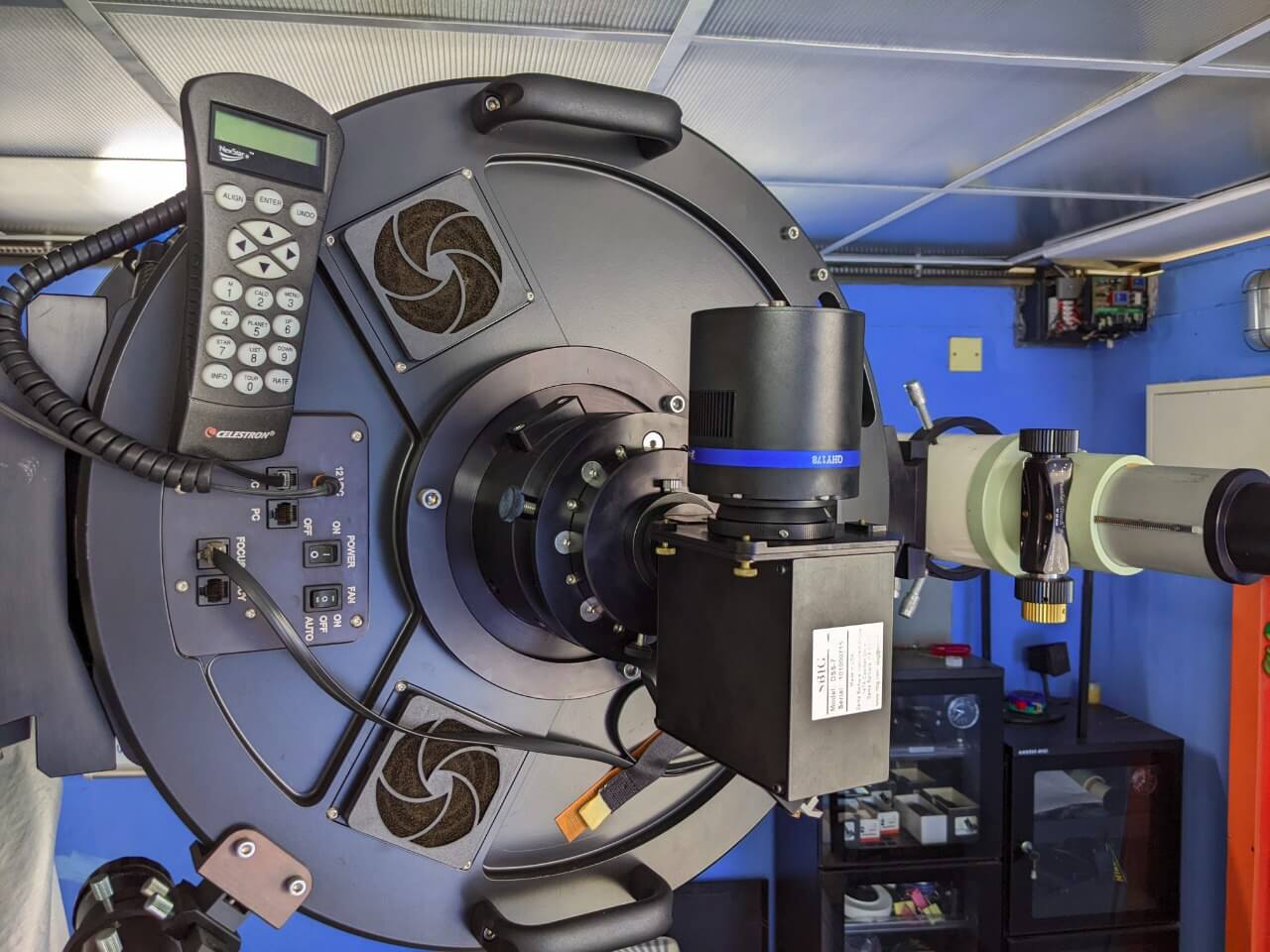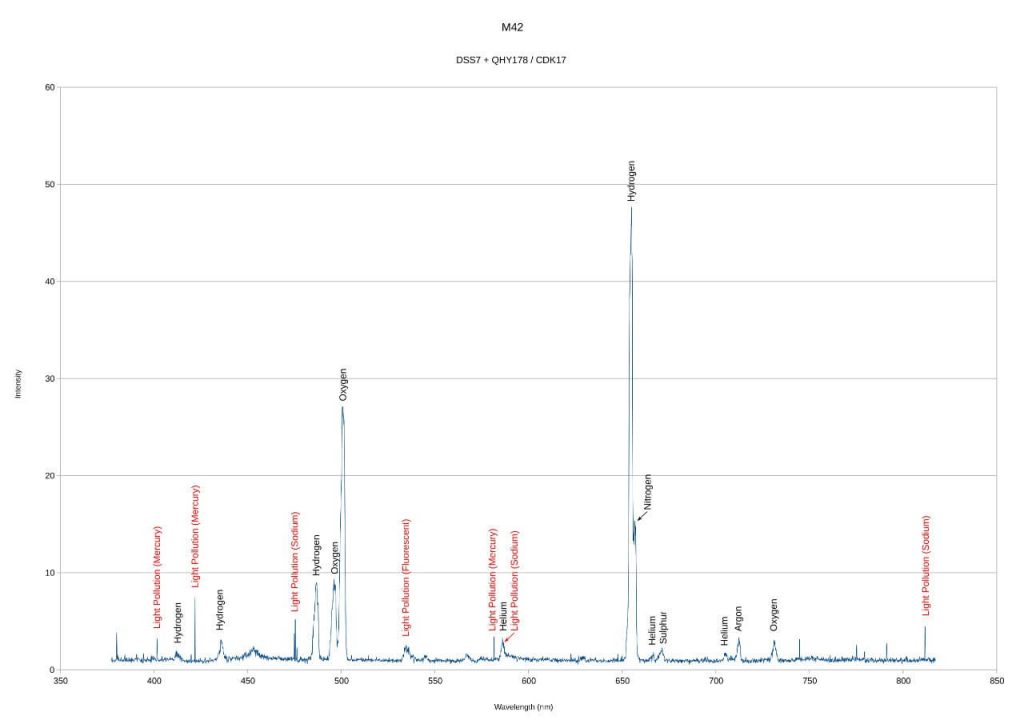The Orion Nebula (Messier 42)
The Orion Nebula (Messier 42) is a bright star-forming region in the constellation of Orion. It is bright enough to be seen without a telescope (even in Singapore) and is one of the most well-studied star-forming regions in the local universe.
This picture was taken by the NUS Observatory on 29 March 2022, using the 17 inch Planewave CDK telescope with a Canon 60Da DSLR. The purplish red hues come from light emitted by hydrogen gas in the nebula, while green light in the nebula comes from light emitted by oxygen gas in the nebula. Throughout the image, there is also background light that comes from light pollution – Singapore is among one of the most light-polluted countries in the world.
The gas clouds in the nebula are lit up by ultraviolet radiation from a cluster of newly-formed stars, some of which are visible in this image—there is a trapezium of stars at the centre of the nebula. There are also dark patches in the nebula which are actually dust clouds that block light. Stars form in these dust clouds where conditions are colder so that the gas and dust can coalesce into clumps and collapse by their own gravity—these are the beginnings of stars.


We can break down the light from a small section of the nebula by using a spectrograph. This is an instrument that will split light into its constituent colours (here we use wavelengths) similar to a prism. From the spectrum, we see that the light from the Orion Nebula is composed of light of very specific colours (wavelengths). This spectrum was also taken by the NUS observatory on 29 March 2022 using the 17 inch Planewave CDK telescope with a SBIG DSS-7 spectrograph and a QHY178M camera.
The peaks (also known as lines) in the spectrum represent light emitted by a specific element (which we can identify by examining a sample of that element in the lab). Here we see hydrogen, oxygen, helium, nitrogen and sulphur in the spectrum of M42, with the strongest peaks being from hydrogen and oxygen. Together with the peaks from nebular gas (generally broader), we also have lines from terrestrial sources (generally narrower) where we can identify emission from mercury (in fluorescent lamps) and sodium (in streetlights).

